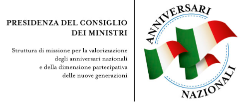Simon, Rick
Passive revolution, perestroika, and the emergence of the new Russia
This article makes a distinction between a 'type I' passive revolution, which transforms the relations of production, and a 'type II' passive revolution, which modifies the existing production relations. It argues that Gorbachev's aim through perestroika was a type II passive revolution designed to rejuvenate the Soviet economy through further integration into the global capitalist economy. The disruption produced by perestroika laid the foundations, however, for a type I passive revolution by opening the door to the influence of global capitalism, fragmenting the heterogeneous Soviet elite, and enabling an opposition linked to global neoliberalism to utilise the nascent Russian state as a mechanism for advancing systemic transformation. The transition to capitalism has not, however, been a smooth process, but has been characterised by 'revolution/restoration': a ruling bloc of pro-capitalist forces and elements of the former Soviet elite; and a combination of capitalist and Soviet-era production relations.
| Lingua | eng |
| Nomi |
[author] Simon, Rick |
| Soggetti |
Rivoluzione Passiva
Perestroika Russia
Passive revolution
Perestroika Russia |

